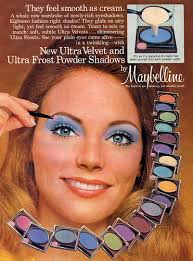 Every industry has its proprietary terms. Those words that when spoken, make non-insiders feel especially like outsiders. Some industries have complete languages of their own. I have friends who speak legalese, medical, philosophy and more. Sometimes those inside the industry bubble don’t realize that they are speaking a language that others don’t understand. This can make for terrible bedside manner — when a doctor thinks she is explaining, but the patient has no idea what is being said. It can make a consultation with an attorney confusing beyond belief. And, I have witnessed graduate students in university classes turn pale and feel ill listening to a professor who seems to be speaking English, yet is unintelligible to the students.
Every industry has its proprietary terms. Those words that when spoken, make non-insiders feel especially like outsiders. Some industries have complete languages of their own. I have friends who speak legalese, medical, philosophy and more. Sometimes those inside the industry bubble don’t realize that they are speaking a language that others don’t understand. This can make for terrible bedside manner — when a doctor thinks she is explaining, but the patient has no idea what is being said. It can make a consultation with an attorney confusing beyond belief. And, I have witnessed graduate students in university classes turn pale and feel ill listening to a professor who seems to be speaking English, yet is unintelligible to the students.
The Marketing field is no different. It has more than its share of in-speak words. In fact, depending on the area in marketing, there are actually sub-categories and the digital sphere is a major culprit. I have had clients who confessed that they had paid others for digital marketing services without actually knowing what the alphabet soup meant, even though they were paying for SEO, CTR, CPA, CPM. Because there is an element of the theatrical and artistic in marketing, there are sometimes marketing pitches full of dramatic and artistic license. “These upmarketing efforts to your subgregated target” (subgregrated?!?) or “smart digital optimizationalism”—yes, I’ve heard that said as if it were something real. These were made up words! Actual fake words used to intimidate the client and make them think they were witnessing some miraculous inaccessible marketing magic.
There is a history of large marketing companies with inflated overhead and huge operations budgets trying to quote clients and give pitches that impress and hide what is actually happening. The idea of saying, “we will be billing you hundreds of thousands of dollars because our conference room is very swanky and we like to play air hockey while we think” isn’t appealing. Here’s the thing…well, one of the things…There are some valid difficulties to billing and quoting in marketing. Clients don’t always understand paying for creative or intellectual equity. There is value in a great creative idea or an aha! genius moment. Those don’t just get born immediately. They often take some ruminating, research, collaboration, brainstorming. That is in large measure what a marketing client is paying for. That incubation of ideas. If a quote or bill could be totally honest, it might state that the client will pay for “as many hours as it takes for us to come up with an incredible idea and to creatively plan to execute said idea” as well as the number of actual hours for design, writing, media placement, etc. But quotes and bills aren’t written that way.
We are big advocates of transparent quoting and billing. That is in part because we aren’t ashamed to say that our minds are the thing. That creative development, the understanding of the importance of communication and relationships with the receivers of the marketing –those are the sweet sauce. We’ve got plenty of it at K2M Creative Media and we’re ready to pour it on in 2019!




 Use your gut. Unless you are colorblind, and I do have some good friends in this category, you probably know what you like and what doesn’t speak to you. Go with it. There aren’t such hard fast rules today that you cannot veer from. I mean, the first make up color wheels were in the 70’s….seriously? Have you seen those pictures???
Use your gut. Unless you are colorblind, and I do have some good friends in this category, you probably know what you like and what doesn’t speak to you. Go with it. There aren’t such hard fast rules today that you cannot veer from. I mean, the first make up color wheels were in the 70’s….seriously? Have you seen those pictures??? You wouldn’t serve a half baked dish to your guests. It might taste bad, or even make them sick. But many small businesses regularly serve half-baked social media to their clients or audience. It’s not on purpose. Nobody is setting out to serve up salmonella-esque social. People just don’t know.
You wouldn’t serve a half baked dish to your guests. It might taste bad, or even make them sick. But many small businesses regularly serve half-baked social media to their clients or audience. It’s not on purpose. Nobody is setting out to serve up salmonella-esque social. People just don’t know. There is a certain amount of mystery that marketing companies have historically. I understand why; much of the work of a marketing agency is creative and intellectual capital. It is the kind of work that is hard to quantify to people. You cannot see it, feel it, touch it. And yet, out of it remarkable things get produced. However, this type of work is easy to mark up in price. Unfortunately, some companies charge a lot of money for very little real work production with a lot of noise about their secret process. Smaller firms and businesses can easily be taken for a ride in this sort of situation.
There is a certain amount of mystery that marketing companies have historically. I understand why; much of the work of a marketing agency is creative and intellectual capital. It is the kind of work that is hard to quantify to people. You cannot see it, feel it, touch it. And yet, out of it remarkable things get produced. However, this type of work is easy to mark up in price. Unfortunately, some companies charge a lot of money for very little real work production with a lot of noise about their secret process. Smaller firms and businesses can easily be taken for a ride in this sort of situation. The most essential element of business is communication. You need channels open to your suppliers, your customers, your employees, and everyone else who plays a role in the success of your business. The question is, are you using the most effective channel for each group – or each person?
The most essential element of business is communication. You need channels open to your suppliers, your customers, your employees, and everyone else who plays a role in the success of your business. The question is, are you using the most effective channel for each group – or each person? The internet, our phones, our devices, they are ultimately visually and sometimes physically noisy.
The internet, our phones, our devices, they are ultimately visually and sometimes physically noisy. In August 2014, we wrote about the great flooding of Southeast Michigan and our impressions of that time through the lens of marketing.
In August 2014, we wrote about the great flooding of Southeast Michigan and our impressions of that time through the lens of marketing.